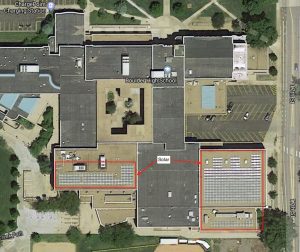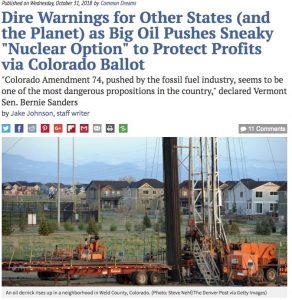AIRE does solar development and wayfinding for nonprofits. We certainly do not do partisan political advocacy and this “emergency” is no exception. However, the current moment seems to be such an extraordinary crux for all things solar, and in fact, all things just and sustainable, probably even all things human civilization, so with that disclaimer, I have to weigh in. This emergency might be understood as politics colliding awkwardly with ecological limits. Critiquing and solving this dilemma is FAR from a partisan exercise. Nothing should divide us on this life-dependent emergency.

Many of us rightfully believe the source of change will come locally. I’ve been spending lots of time in Boulder, Colorado. My daughter is a student at the University of Colorado there, so I figured what a great opportunity to be up close to observe, study and have dialogue with the good things going on there. The city is a well known case study of municipal electric utility with its renewable energy initiative, and it has miles of bike lanes and greenways. All these are the product of design intent and vision.
Look at how much rooftop solar exists there. Open your favorite mapping tool and look around. Look at the University of Colorado’s campus. Certainly several megawatts. 
Look at Boulder High School and the public school district. Impressive. Downtown, government, and the commercial district? Ditto. The environmentally oriented radio program eTown also walks its talk with 56kW on top of its theatre downtown on Spruce Street.
But the area is also a landscape of contradiction. Contrast the great solar and such around Boulder with the sprawling suburbs stretching out east toward Denver International Airport and the Great Plains beyond. Many of those homes have rooftop solar, but in their backyards, a wiffle ball throw from children’s swing sets are countless fracking derricks. It’s a very weird and conflicted landscape, though in that sense, a perfectly visceral image of the emergency.
It’s the perfect storm of bad ecological and social news that seems to be intensifying rapidly and crashing up against what we might call nature’s limits. An example of the festering symptoms at the local level are two recent amendments on the Colorado ballot for the November 6th election. Grassroots citizens groups aiming to protect against fracking in their backyards (literally) sought to establish a setback to keep fracking rigs off of their property line with Amendment 112. 
Amendment 74 was a fossil fuel counter attack that would have enabled a property owner to sue a town for passing a law that reduced an owner’s property value. More insidious though was the idea that a fossil fuel company could sue for reduced value of its oil and gas reserves. 74 threatened the autonomy of communities and states, and would have given the fossil fuel industry a free hand to wreak havoc by forcibly and deceptively taking more autonomous rights away from local governments and people. Part of the emergency is that it goes way beyond Boulder. It reaches every place.
Another aspect of the emergency is that it’s a blueprint for industry and not an isolated one-off legislative failure. What’s the point of great local efforts if the fossil fuel industry is allowed to surround all that good with such brazen destructiveness? 
Note: Both amendments failed. See analysis and results on 112 here. Results and analysis for 74 here. Read an excellent piece on the amendments at Capital & Main. Here’s the Commondreams piece referenced in the screengrab. Finally, big oil gushed money at the rate of 40:1 against the grassroots initiative to decieve the public, confuse the narrative and poison citizens’ understanding of the issue.